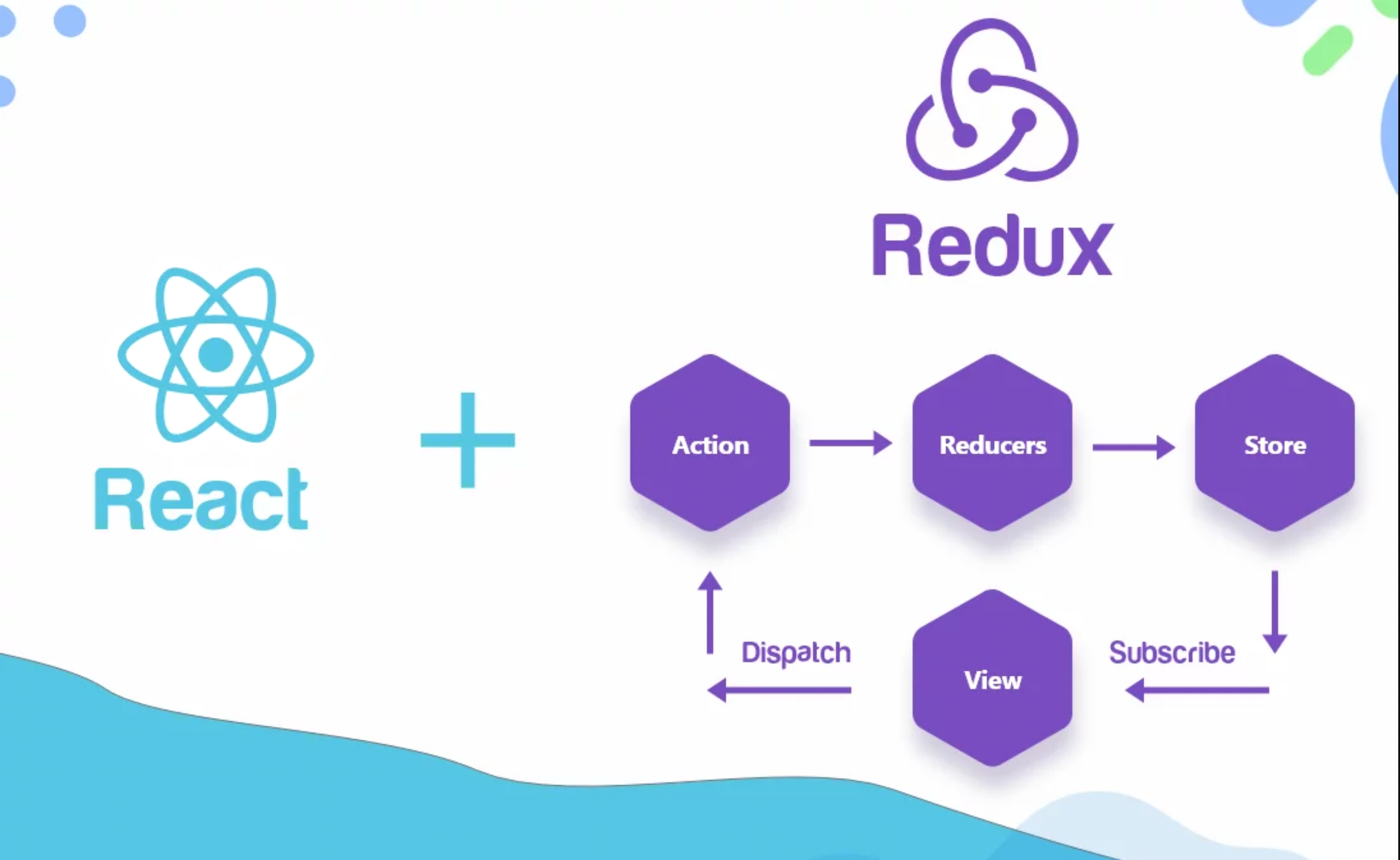Introduction
In the front-end development, managing state effectively is paramount to building robust and scalable applications. As your React application grows in complexity, you might encounter challenges in managing state across various components, passing props down multiple levels, and handling state changes efficiently. This is where Redux comes into play.
Redux is a predictable state container for JavaScript applications, primarily used with libraries like React or Angular for managing application state in a more organized and scalable manner. In this guide, we’ll delve into the fundamentals of Redux and how it integrates seamlessly with React to address common state management issues.
Why Redux?
Before diving into Redux, let’s understand why we need it in the first place. In React, state management primarily revolves around component state and props. While this works well for small to medium-sized applications, it becomes challenging to manage state in larger applications with deeply nested components and complex data flows.
Issues with Managing State via Props
Consider a scenario where you have a parent component that needs to pass data to its deeply nested child components. You end up passing props through several intermediate components, leading to what’s commonly known as “prop drilling.” This not only clutters your code but also makes it harder to maintain and debug.
// ParentComponent.js
import React from 'react';
import ChildComponent from './ChildComponent';
const ParentComponent = () => {
const data = fetchData(); // Some function to fetch data
return <ChildComponent data={data} />;
};
export default ParentComponent;
// ChildComponent.js
import React from 'react';
import GrandChildComponent from './GrandChildComponent';
const ChildComponent = ({ data }) => {
return <GrandChildComponent data={data} />;
};
export default ChildComponent;
// GrandChildComponent.js
import React from 'react';
const GrandChildComponent = ({ data }) => {
// Do something with data
return <div>{data}</div>;
};
export default GrandChildComponent;
In this example, data is passed from ParentComponent to ChildComponent and then to GrandChildComponent. While this approach works, it becomes cumbersome as the application scales, especially if data needs to be accessed by multiple components at different levels of the component tree.
Introduction to Context API
React provides the Context API as a solution to prop drilling. Context allows you to pass data through the component tree without having to pass props down manually at every level. While Context can alleviate some of the issues associated with prop drilling, it has its limitations, particularly in terms of performance and complexity.
// DataContext.js
import React, { createContext, useState } from 'react';
export const DataContext = createContext();
export const DataProvider = ({ children }) => {
const [data, setData] = useState(null);
// Fetch data and update state
return (
<DataContext.Provider value={{ data, setData }}>
{children}
</DataContext.Provider>
);
};
With the Context API, you can wrap your component tree with a DataProvider, providing access to data throughout your application without the need for prop drilling. While this simplifies state management, it can lead to performance issues, especially in applications with deeply nested components or frequent updates to the context.
Understanding Redux
Redux offers a more structured approach to state management by centralizing application state in a single store. It follows the principles of a unidirectional data flow, making it easier to understand and debug your application’s state changes.
Redux Core Concepts
Before we delve into how Redux integrates with React, let’s explore its core concepts:
- Store: The single source of truth that holds the application state.
- Actions: Plain JavaScript objects that represent changes to the state.
- Reducers: Pure functions responsible for handling state transitions based on actions.
- Dispatch: The mechanism for triggering actions to update the state.
- Selectors: Functions used to extract specific pieces of data from the store.
Setting Up Redux in a React Application
To use Redux with React, you need to install the necessary packages:
npm install redux react-redux
Defining Reducers
// reducers.js
const initialState = {
// Define initial state properties
};
const rootReducer = (state = initialState, action) => {
switch (action.type) {
// Define how state changes based on actions
default:
return state;
}
};
export default rootReducer;
Reducers are pure functions in Redux responsible for handling state transitions based on dispatched actions.
-
Initial State: You start by defining an initial state object, which represents the initial state of your application. This object typically contains various properties representing different parts of your application’s state.
-
Root Reducer Function: Next, you define a root reducer function using the ES6 arrow function syntax. This function takes two parameters:
state(representing the current state of the application) andaction(representing the action that was dispatched). -
Switch Statement: Within the root reducer function, you typically use a
switchstatement to handle different action types. Eachcasein theswitchstatement corresponds to a specific action type, and you define how the state should change in response to each action. -
Default Case: The
defaultcase in theswitchstatement returns the current state unchanged if the action type doesn’t match any of the defined cases. This ensures that your reducer always returns a valid state, even if no action type matches. -
Returning New State: Inside each
case, you return a new state object that reflects the updated state of your application based on the action dispatched. -
Exporting the Root Reducer: Finally, you export the root reducer function so that it can be combined with other reducers if needed and used to create the Redux store.
Creating a Redux Store
// store.js
import { createStore } from 'redux';
import rootReducer from './reducers';
const store = createStore(rootReducer);
export default store;
In Redux, the store is a single JavaScript object that holds the entire state of your application. It serves as the “single source of truth” and allows you to access and update the state in a predictable manner.
-
Importing
createStore: Redux provides acreateStorefunction, which is used to create a Redux store. This function needs to be imported from thereduxpackage. -
Importing Root Reducer: The store is initialized with a root reducer, which is a function that specifies how the application’s state should change in response to actions. The root reducer combines multiple reducers into a single reducer function using
combineReducers(not shown in the provided code snippet). -
Creating the Store: Once you’ve imported
createStoreand the root reducer, you can create the Redux store by callingcreateStoreand passing in the root reducer as an argument. -
Exporting the Store: Finally, you export the created store so that it can be imported and used throughout your application.
Providing Redux Store to the React App
// index.js
import React from 'react';
import ReactDOM from 'react-dom';
import { Provider } from 'react-redux';
import store from './store';
import App from './App';
ReactDOM.render(
<Provider store={store}>
<App />
</Provider>,
document.getElementById('root')
);
In a React application, you need to provide the Redux store to your components so that they can access the application state and dispatch actions.
-
Importing Dependencies: You start by importing necessary dependencies from the
reactandreact-dompackages, includingProviderfromreact-reduxand the Redux store. -
Rendering the App: Inside your
ReactDOM.render()function, you wrap your root component (usuallyApp) with theProvidercomponent imported fromreact-redux. ThisProvidercomponent accepts astoreprop, to which you pass your Redux store. -
Injecting the Store: By wrapping your root component with the
Providercomponent and passing the Redux store as a prop, you make the Redux store available to all components in your React application via React’s context API. -
Mounting the App: Finally, you specify the DOM element where your React application should be rendered (e.g.,
document.getElementById('root')).
By following these steps, you ensure that your Redux store is properly integrated with your React application, enabling seamless state management and interaction between React components and the Redux store.
Working with Redux in React Components
Now that we have set up Redux in our React application, let’s see how we can use it in our components.
Connecting Components to Redux Store
// MyComponent.js
import React from 'react';
import { connect } from 'react-redux';
const MyComponent = ({ data }) => {
return <div>{data}</div>;
};
const mapStateToProps = (state) => ({
data: state.data,
});
export default connect(mapStateToProps)(MyComponent);
In this example, MyComponent is connected to the Redux store using the connect function provided by react-redux. It receives data from the Redux store as a prop.
Dispatching Actions
// MyComponent.js
import React from 'react';
import { connect } from 'react-redux';
import { fetchData } from './actions';
const MyComponent = ({ data, fetch }) => {
const handleClick = () => {
fetch(); // Dispatches fetchData action
};
return (
<div>
<div>{data}</div>
<button onClick={handleClick}>Fetch Data</button>
</div>
);
};
const mapStateToProps = (state) => ({
data: state.data,
});
const mapDispatchToProps = (dispatch) => ({
fetch: () => dispatch(fetchData()),
});
export default connect(mapStateToProps, mapDispatchToProps)(MyComponent);
In this example, MyComponent dispatches the fetchData action when a button is clicked. The action is dispatched through the fetch prop, which is mapped to the fetchData action creator using mapDispatchToProps.
Immutability in Redux
One of the key principles of Redux is immutability, which means that state should not be mutated directly. Instead, state transitions are handled by creating a new state object based on the previous state and the action dispatched.
// reducers.js
const initialState = {
counter: 0,
};
const rootReducer = (state = initialState, action) => {
switch (action.type) {
case 'INCREMENT':
return {
...state,
counter: state.counter + 1,
};
case 'DECREMENT':
return {
...state,
counter: state.counter - 1,
};
default
:
return state;
}
};
export default rootReducer;
In this example, when the INCREMENT action is dispatched, a new state object is returned with the counter incremented by 1. Similarly, when the DECREMENT action is dispatched, a new state object is returned with the counter decremented by 1.
Conclusion
In this guide, we’ve covered the basics of Redux and how it integrates with React for effective state management. By centralizing application state and following the principles of a unidirectional data flow, Redux provides a scalable solution to managing state in React applications. While Redux introduces additional complexity compared to using React’s built-in state management capabilities, its benefits become apparent as your application grows in size and complexity.
Whether you’re building a small application or a large-scale enterprise application, understanding Redux and its integration with React will empower you to build more maintainable and scalable front-end applications. Experiment with the examples provided in this guide and explore further to deepen your understanding of Redux and its application in real-world projects. In next article we will look at an easy way of using redux. Untill then ..Happy coding!
真诚赞赏,手留余香
使用微信扫描二维码完成支付



